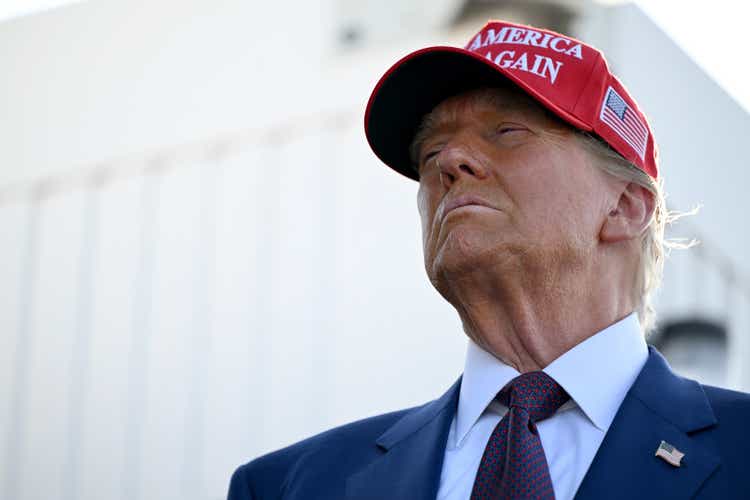Trump's tariffs could cost Americans $78B in annual spending power: NRF

Brandon Bell/Getty Images News
President-elect Donald Trump’s proposed tariffs on imports to the U.S. could substantially increase prices for clothing, toys, furniture, household appliances, footwear and travel goods, according to a report from the National Retail Federation (NRF).
American consumers could lose between $46B and $78B in spending power each year if the new tariffs are implemented, or $362-$624 per household, the report published earlier this month added.
Trump has said that he would impose a 10% to 20% tariff on all imports, with a higher rate of 60% to 100% on Chinese imports. He also proposed a 25% tariff rate on Mexico if the country did not enact stricter border regulations.
According to Goldman Sachs, "The biggest risk is a large across-the-board tariff, which would likely hit growth hard."
The increased prices would be too high to be absorbed by U.S. retailers, resulting in prices that many consumers would be unwilling or unable to pay, the NRF report said.
According to the report, under the new tariffs, consumers would end up paying $13.9B to $24B more for clothing, $8.8B to $14.2B more for toys, $8.5B to $13.1B more for furniture, $6.4B to $10.9B more for household appliances, $6.4B to $10.7B more for footwear, and $2.2B to $3.9B more for travel goods.
The NRF highlighted that the six categories examined in the report can be found in nearly every home in the United States, with the money it takes to buy them representing a greater share of after-tax income of low-income households compared to high-income households.
"The tariffs are paid first by American importers (not foreign countries or foreign suppliers), very few of whom can absorb the significantly higher costs out of their profits," the report said. "As the products make their way to retail shelves, that tariff cost transfers as well, and materializes in the form of higher prices of goods sold to American consumers."
While some producers and the U.S. Treasury might benefit, the costs to consumers would exceed those gains and the U.S. economy would suffer a net loss, the NRF said.
Some of the biggest U.S. retailers include: Amazon (AMZN), Walmart (WMT), Costco (COST), Kroger (KR), Home Depot (HD), Target (TGT).
Here are some retail and e-commerce linked exchange-traded funds of interest: (XRT), (RTH), (IBUY), (ONLN), (EBIZ), (RETL), and (EMTY).
For investors looking to follow the federal government through market instruments, here are some politically driven Republican and Democratic ETFs:
- God Bless America ETF (YALL)
- American Conservative Values ETF (ACVF)
- Point Bridge America First ETF (MAGA)
- Democratic Large Cap Core ETF (DEMZ)
- Unusual Whales Subversive Democratic ETF (NANC)
- Unusual Whales Subversive Republican ETF (KRUZ)
Dear readers: We recognize that politics often intersects with the financial news of the day, so we invite you to click here to join the separate political discussion.
免責聲明:投資有風險,本文並非投資建議,以上內容不應被視為任何金融產品的購買或出售要約、建議或邀請,作者或其他用戶的任何相關討論、評論或帖子也不應被視為此類內容。本文僅供一般參考,不考慮您的個人投資目標、財務狀況或需求。TTM對信息的準確性和完整性不承擔任何責任或保證,投資者應自行研究並在投資前尋求專業建議。
熱議股票
- 1
- 2
- 3
- 4
- 5
- 6
- 7
- 8
- 9
- 10